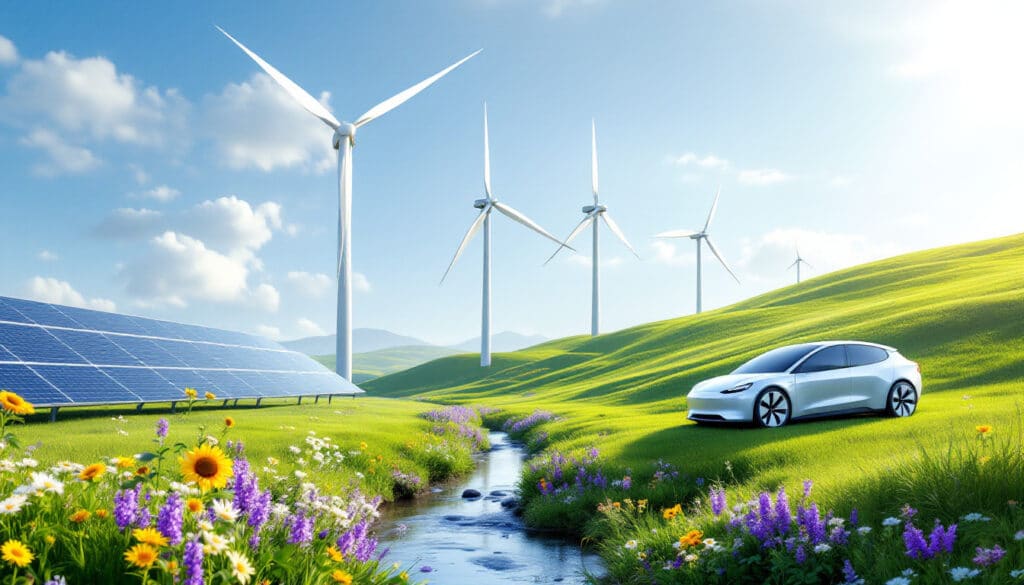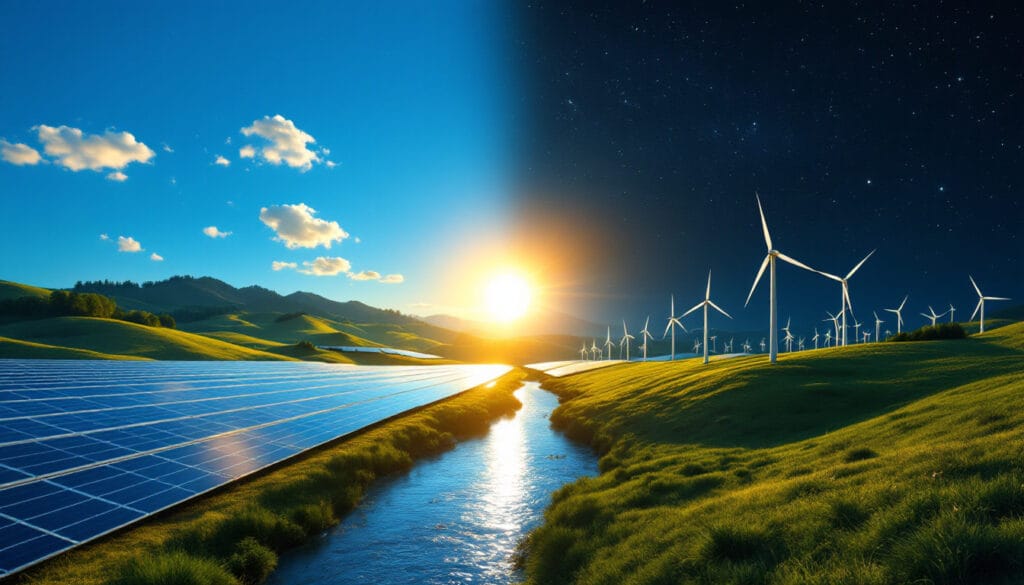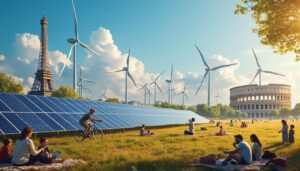Green energy represents a major step towards a more sustainable and respectful future for our planet. Coming from natural and renewable resources such as the sun, wind, or biomass, it is distinguished by its low greenhouse gas emissions. This type of energy, both clean and inexhaustible, offers a promising alternative to fossil fuels and is a key element of the ecological transition. In Europe, some countries have already adopted its widespread use, thereby reducing their carbon footprint. Green energy is also becoming a job driver and allows for a significant decrease in energy bills for consumers. Encouraging its development opens the way to a world where harmony with the environment is possible.
Glossary: The Essentials of Green Energy
In a world seeking sustainable solutions, green energy stands as a valuable tool to meet the climate challenge. But what does this concept really encompass? Here’s a guide to clarify things.
Green energy: We talk about green energy when it is produced from natural and renewable resources. This includes energy from the sun, wind, water, biomass, and geothermal heat. These sources do not require the depletion of our planet’s resources as they regenerate naturally.
Renewable energy: This term refers to energy sources that can be replenished over the long term. Renewable energies produce little to no greenhouse gas emissions. This makes them ideal options for reducing our carbon footprint.
Clean energy: Although there is a similarity with renewable energy, clean energy refers to energy sources that minimize pollutant emissions. This includes electricity produced by solar panels and wind turbines that do not emit CO2 during their use.
Photovoltaic: This technology harnesses sunlight to generate electricity directly from solar cells. It is one of the most popular methods for generating green energy and is increasingly favored for self-consumption and large solar installations.
Biomass: This refers to organic matter used to produce energy. It often comes from agricultural, forestry waste, and even household waste. By burning or decomposing biomass, electricity can be generated or eco-friendly fuel can be produced.
Fuel cells: These devices convert chemical energy into electricity through a reaction between hydrogen and oxygen, without combustion. They are increasingly used in vehicles and for stationary applications.
Wind energy: With its large rotating turbines, wind energy captures the force of the wind to produce electricity. Although challenges remain, notably related to a “wind power crisis” that slows some ambitions, this technology remains crucial for increasing the share of renewable energies in the energy mix.
In Europe, Sweden stands out with a consumption of over 60% of renewable energies, serving as a model to follow for many countries. However, geopolitical obstacles and controversial decisions, such as the rollback of certain policies in the United States, show that the path towards a world dominated by green energies is still fraught with challenges.
The adoption of green energy therefore represents not only an environmental challenge, but also a sociopolitical and economic challenge. Initiatives like Envision Energy with their installation in Kazakhstan demonstrate promising stability for the development of such sources in various regions of the world.
By positively influencing our ecological footprint and creating jobs, green energy truly becomes an essential component of our energy future.

FAQ on Green Energy
Q : What is green energy?
A : Green energy is a form of energy generated from natural and renewable resources, such as the sun, wind, water, biomass, and heat from the Earth. It is called “green” because it is both clean and inexhaustible.
Q : What is the difference between clean energy and renewable energy?
A : Energy is called clean when its production results in very little or no greenhouse gas emissions. Renewable energy is a source that naturally replenishes itself and is nearly inexhaustible, such as solar and wind energy.
Q : What are the benefits of green energy?
A : Green energy reduces the carbon footprint by emitting very few pollutants. It is also an important driver for job creation and allows for a reduction in energy bills on a daily basis. It contributes significantly to the ecological transition.
Q : How can I know if I am powered by green energy?
A : To ensure you are consuming green energy, it is crucial to inquire with your electricity provider and check the guaranteed certificates of renewable origin, often provided when subscribing to a green offer.
Q : Which countries are the main consumers of green energy?
A : In Europe, Sweden is at the forefront with more than 60% of its energy consumption coming from renewable sources. Several countries, such as Germany and Denmark, are also investing heavily in these energies.
Articles similaires
Thank you!
We will contact you soon.













